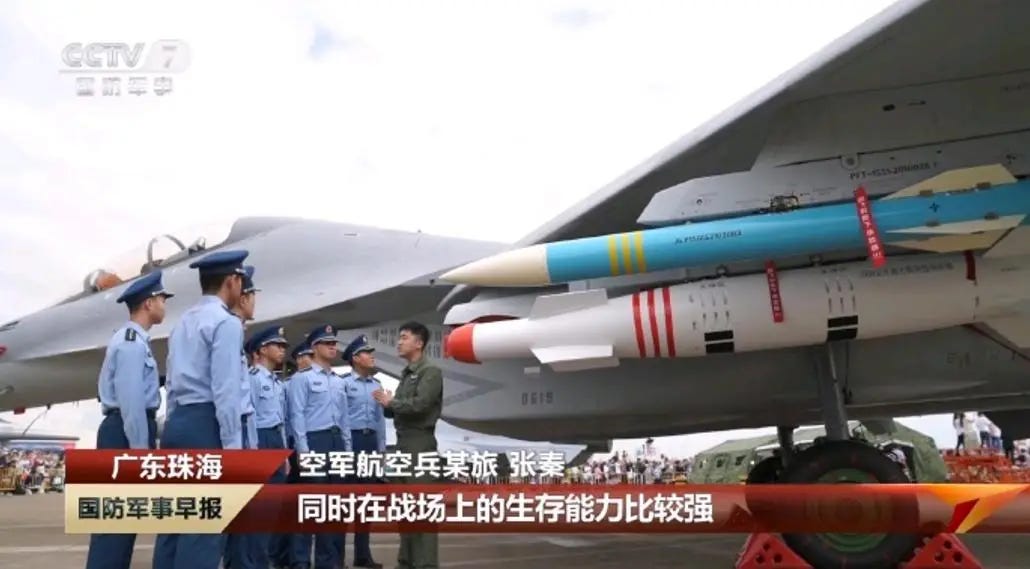Executive Summary:
Beijing interprets recent U.S. strikes on Iran’s nuclear facilities as a demonstration of deterrence aimed at supporters of Iran’s Islamic regime.
In response, state media showcased the Yunjian-1000 bunker-busting missile, implying that the People’s Liberation Army has superior capabilities than those of the United States.
Experts have also been platformed to describe defense systems protecting the People’s Republic of China’s (PRC) own nuclear arsenal.
The PRC’s diplomatic response has been mostly conventional, while online public discourse has framed the United States and Israel as principal instigators of instability in the Middle East.
Starting on June 13, Israel and Tehran engaged in 12 days of hostilities following attacks launched by the Israeli Defense Force on Iranian military installations (The Jerusalem Post, June 13). In the days immediately following the strikes, Beijing’s response remained largely confined to conventional diplomatic rhetoric. The People’s Republic of China (PRC) issued statements condemning what they described as unilateral escalations by the United States and Israel, called for dialogue-based conflict resolution, and reiterated support for Iran’s peaceful use of nuclear energy within the framework of the International Atomic Energy Agency (IAEA) (Foreign Minister PRC, June 14, June 24).
PRC state media primarily relied on reports from Tehran as their source material for war coverage. This reinforced Iranian narratives that portrayed the conflict as one in which Iran had launched a righteous counteroffensive, Israel had suffered substantial losses, and Tel Aviv was engulfed in flames (Guangming Daily, June 17; China National Radio, June 19). Reliance on such coverage reflects Tehran’s status as a “comprehensive strategic partner” (全面战略伙伴) for Beijing (MFA, accessed June 27).
Government censors also allowed anti-American and anti-Israeli discourse to circulate online. This ranged from portraying the United States and Israel as primary instigators of instability in the Middle East to anti-Semitic content promoting variants of the international Jewish conspiracy that claims the world is dominated and controlled by a circle of jews. A search for terms like “Jewish” (犹太) or “Israel” (以色列) on major Chinese social media platforms—such as Bilibili, Xiaohongshu, Weibo, and Douyin—reveals a surge of antisemitic content. This content has become increasingly common following Hamas’s October 7, 2023 attacks on Israel and the ensuing war in Gaza (Discourse Power, June 17). Many of these posts, which have received a large number of shares and likes from users, are rife with racism and Holocaust denial—content that, by the platforms’ own regulations, should have been removed. Bilibili, for instance, nominally bans posts that promote discrimination or constitute hate speech (see Figure 1); yet suggested videos have titles like “Why the whole world hates Jews! After watching this you will know why they don’t deserve mercy!” (为何犹太人被全世界所憎恶!看完后就知道他们并不值得怜悯!) (see Figure 2).


Coverage shifted in the fallout from “Operation Midnight Hammer,” where the U.S. military used seven B-2 bombers to deploy GBU-57 Massive Ordnance Penetrator (MOPs) bombs targeting three nuclear sites in Iran (U.S. Department of Defense, June 22). The next day, state broadcaster CCTV aired a military segment showcasing video footage of the PLA’s Yunjian-1000 bunker-busting missile (云箭1000型钻地弹) in action (Douyin/CCTV, June 23). Unlike the GBU-57, which free-fall vertically from strategic bombers, footage showed the Yunjian-1000 being launched from a supersonic FBC-1 “Flying Leopard” fighter-bomber (“飞豹”全天候超音速歼击轰炸机) using a Dongfeng missile system. The video footage implied that the lighter PRC missile, when launched at higher velocity via missile propulsion, could achieve greater impact force on contact—thereby enhancing its ability to penetrate and destroy deeper subterranean targets. In other words, the PRC has superior capabilities.
In a separate interview program, CCTV featured Professor Qian Qihu (钱七虎) of the PLA Army Engineering University (解放军陆军工程大学). The program stated that Qian’s research team had developed an advanced defensive system designed specifically to protect PRC’s own underground nuclear infrastructure from penetration weapons like those recently used by the United States (CCTV, June 24).
Beijing’s actions suggest that it does not view the U.S. strikes on Iran’s nuclear facilities solely as a case of strategic bombing. Rather, it interprets them as a demonstration of deterrence aimed at supporters of Iran’s Islamic regime. In response, the PRC appeared eager to signal that, unlike Iran, it is not without countermeasures in the face of the B-2 and GBU-57 combination and may in fact possess even more advanced weaponry.
Beijing is also well aware that the B-2 bombing mission was made possible by the U.S. military’s global defense posture, including access to overseas bases and the support of regional allies. Lacking a comparable military infrastructure, Beijing instead focused its own deterrence messaging on showcasing weapons with greater precision and destructive capability. The fact that its warhead can be delivered via Dongfeng missiles was a deliberate message: the PRC possesses long-range strike capabilities that do not rely on foreign basing, allowing it to project power from its own territory.
This article originally appeared in China Brief Notes. You can check it out here!
Shijie Wang is the Deputy Editor of China Brief. He has a Master’s degree in public policy from Georgetown University.




